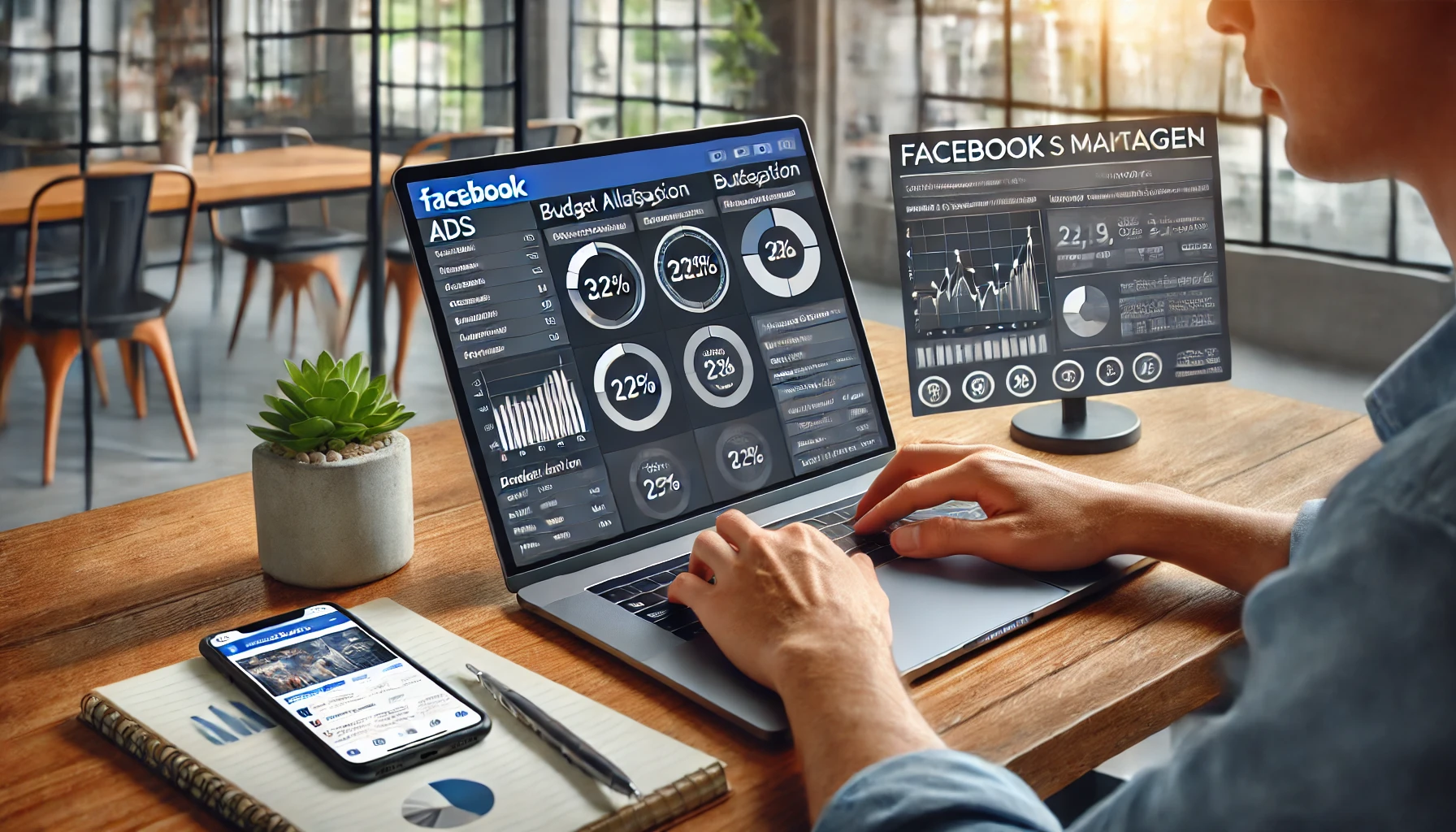Running Facebook Ads is a powerful way to reach your target audience, but simply launching a campaign isn’t enough. To achieve the best results, you need to optimize your ads continuously. Whether you’re looking to lower your cost per conversion, increase engagement, or maximize return on investment (ROI), proper optimization is key.
In this guide, we’ll explore proven strategies to optimize Facebook Ads for better performance and higher conversions.
1. Define Clear Goals for Your Campaign
Before launching an ad, you need to define your objective. Facebook offers different campaign objectives based on your marketing goals, including:
- Brand awareness – Increase recognition and reach.
- Traffic – Drive more users to your website or landing page.
- Engagement – Boost likes, comments, and shares.
- Leads – Generate sign-ups or inquiries.
- Conversions – Encourage actions like purchases or registrations.
Choosing the right objective ensures Facebook’s algorithm optimizes the campaign for the best results.
2. Use the Facebook Pixel for Better Targeting
The Facebook Pixel is essential for tracking visitor behavior and optimizing ad performance. It helps you:
- Retarget website visitors who didn’t convert.
- Track actions like purchases, form submissions, or downloads.
- Create Lookalike Audiences based on existing customers.
If you haven’t installed the Pixel yet, follow our previous guide on how to set up the Facebook Pixel to get started.
3. Target the Right Audience
Choosing the right audience is crucial to running a successful Facebook Ad campaign. Here are three effective ways to improve your targeting:
A. Use Custom Audiences
Custom Audiences allow you to target users who have already interacted with your business. Examples include:
- Website visitors (via the Facebook Pixel).
- People who engaged with your Facebook or Instagram page.
- Email subscribers or past customers (via a customer list).
B. Create Lookalike Audiences
A Lookalike Audience is a new audience that shares similar traits with your best customers. Facebook analyzes your existing audience and finds high-potential users who are more likely to convert.
C. Refine Your Audience Based on Interests and Behaviors
If you’re targeting a cold audience, focus on demographics, interests, and behaviors. For example, if you’re running ads for a fitness app, you might target:
- People interested in health & wellness.
- Users who follow fitness influencers.
- Individuals who engage with fitness-related content.
Narrowing your audience ensures your ads reach the most relevant people.
4. Optimize Your Ad Creatives
Your ad creative (image, video, and text) plays a crucial role in capturing attention and driving engagement. Here’s how to improve it:
A. Use High-Quality Visuals
- Use bright, eye-catching images or engaging videos.
- Avoid stock photos that look generic.
- Add minimal text to images (Facebook prioritizes ads with less text).
B. Write Engaging Ad Copy
Your ad copy should be:
- Clear and concise – Get to the point quickly.
- Emotionally appealing – Use persuasive language.
- Action-oriented – Include a strong call to action (CTA).
Example of an effective ad copy for an online course:
🚀 Want to become a digital marketing expert?
Join our FREE masterclass and start learning today!
📅 Sign up now – spots are limited!
C. Test Different Ad Formats
Experiment with different formats, such as:
- Single image ads – Best for simple, direct messaging.
- Video ads – Increases engagement and storytelling.
- Carousel ads – Show multiple products or features.
- Collection ads – Ideal for e-commerce, displaying multiple items.
Testing multiple creatives will help you identify which performs best.
5. Improve Your Ad Copy and CTA
A weak call to action (CTA) can hurt your conversion rates. Instead of generic CTAs like “Learn More,” try:
✅ “Get Your Free Guide Now”
✅ “Claim Your Discount Today”
✅ “Start Your 7-Day Trial”
Make sure your CTA matches your offer and creates a sense of urgency.
6. A/B Test Your Ads
A/B testing (split testing) allows you to compare different versions of an ad to see which performs best. Test:
- Different headlines (e.g., “50% Off Today” vs. “Limited-Time Offer”).
- Images vs. videos – See which drives more engagement.
- Short vs. long ad copy – Test different messaging styles.
Always test one element at a time to pinpoint what improves performance.
7. Optimize Your Landing Page
If you’re driving traffic to a landing page, it needs to be:
- Fast-loading – Slow pages increase bounce rates.
- Mobile-friendly – Over 80% of Facebook users browse on mobile.
- Conversion-focused – Clear headlines, CTA buttons, and easy navigation.
Even if your ad is great, a poorly optimized landing page can reduce conversions.
8. Use Facebook’s Automated Rules for Budget Optimization
Facebook offers Automated Rules to help manage your budget. You can set rules like:
- Increase budget when cost per conversion is below $5.
- Pause ads when click-through rate (CTR) drops below 1%.
- Adjust bidding based on performance trends.
This helps you save time and improve efficiency.
9. Adjust Your Ad Placement
Facebook Ads can appear in different locations, including:
- News Feed (desktop & mobile).
- Instagram Stories & Feed.
- Audience Network (partner websites).
- Facebook Marketplace.
Try automatic placements first, then adjust based on performance data.
10. Monitor Performance and Optimize Regularly
Tracking your key metrics will help you refine your strategy. Focus on:
- Click-Through Rate (CTR) – Measures engagement (ideal: 2%+).
- Cost Per Click (CPC) – Lower CPC means better efficiency.
- Conversion Rate – Tracks how many users take action.
- Return on Ad Spend (ROAS) – Measures profitability.
If your ad isn’t performing well, try adjusting the audience, creatives, or bidding strategy.
Final Thoughts
Optimizing Facebook Ads isn’t just about launching a campaign and hoping for the best—it’s about constant improvement.
By following these strategies—targeting the right audience, improving creatives, A/B testing, and tracking performance—you’ll increase engagement, reduce costs, and maximize your ROI.
Start implementing these tips today and watch your Facebook Ads perform better than ever! 🚀
